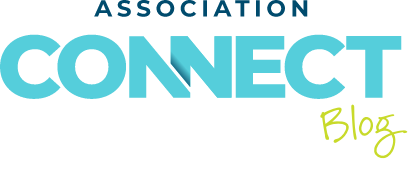Navigating Government Financial Aid

By now, you’ve likely heard of the 880-page bill known as the Coronavirus Aid, Relief, and Economic Security (CARES) Act, the financial relief package signed into law to combat the negative impact COVID-19 has had on the economy, businesses, and individuals. If you have the time, by all means read it for yourself and try to glean what benefits might work best for your association during this crisis. For the rest of us, here are the highlights:
Support for Small to Midsized Businesses
This bill highlights a new emergency Paycheck Protection Program (PPP), which establishes a Small Business Administration loan (SBA 7(a)) for businesses with 500 or fewer employees. To qualify, your association must have been in existence on February 15, 2020 or earlier. Incentivizing companies to keep workers on the payroll, the biggest thing to note is this loan is forgivable if the business keeps staff on the payroll between March 1 and June 30—therefore, this loan basically turns into a grant. The forgivable loan can be taken out for as much as $10 million (or 2.5 times the average total monthly payroll costs from the one-year prior to the date of the application) and can be used to cover payroll, health insurance, and facilities costs, in addition to debt service. Look to your local financial institutions to process this loan, but do be cautious. If you haven’t already applied, do so here.
Support for Larger Businesses
If your association is on the larger side, say between 501–10,000 employees, there’s something in the CARES Act for you, too. The less than great news is that through this new Industry Stabilization Fund, the loans for these larger entities will not be forgivable like the one described above. However, these loans will not have an interest rate higher than 2% and will not accrue interest or require repayment for the first six months of the loan term.
Economic Injury Disaster Loans
EIDL creates emergency grants for eligible nonprofits and other applicants with 500 or fewer employees, enabling them to receive checks for $10,000 within three days. According to sba.gov, businesses in certain industries may have more than 500 employees and be eligible if they meet the SBA’s size standards for those industries. To apply, you must have been in operation prior to January 31, 2020. There is an interest rate of 2.75% with this one, however. Also worth noting is that the $10,000 advance is forgiven, even if the borrower is denied further EIDL loans. Apply here for emergency EIDL funds.
Reimbursable Payroll Tax Credits
Sections 5102 and 3102 of CARES outline expansions to paid sick leave and family and medical leave, respectively. Employers paying for this mandated paid leave are entitled to claim a refundable tax credit for any paid leave costs that exceed the amount of payroll taxes owed. In other words, the government will cover some or all of the costs of these paid leave mandates.
Here is a breakdown of those payouts, according to councilofnonprofits.org:
- Under the Paid Sick Leave Mandate: Employers paying for employees who must self-isolate, obtain a diagnosis, or comply with self-isolation recommendation with respect to coronavirus may receive tax credits of up to $511 per day. Payments to employees caring for a family member or for a child whose school or child care center is closed, qualified sick leave wages are capped at $200 per day. Both types of wages are capped at 10 days in the aggregate. (Section 7001)
- Paid Family and Medical Leave Mandate: The refundable tax credit for qualified family leave provision is capped at $200 per day and $10,000 each quarter. (Section 7003)
And speaking of taxes, employers are now allowed to delay payment of the employer portion payroll taxes; they are payable in equal halves at the end of 2021 and 2022.
Note: This post is purely informational and is not meant to serve as legal advice.
Have an idea for an article? Let us know!
Receive the Association Connect newsletter
A proud company of The YGS Group | HQ: 3650 W. Market St., York, PA 17404
- Privacy
- YGS Association Solutions © 2025

